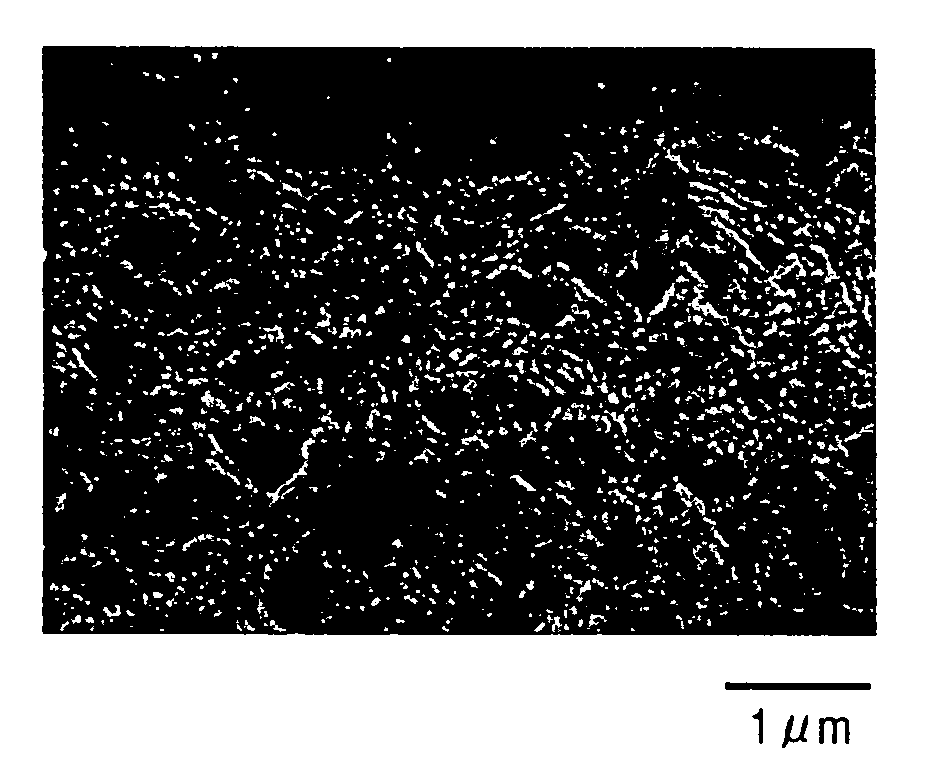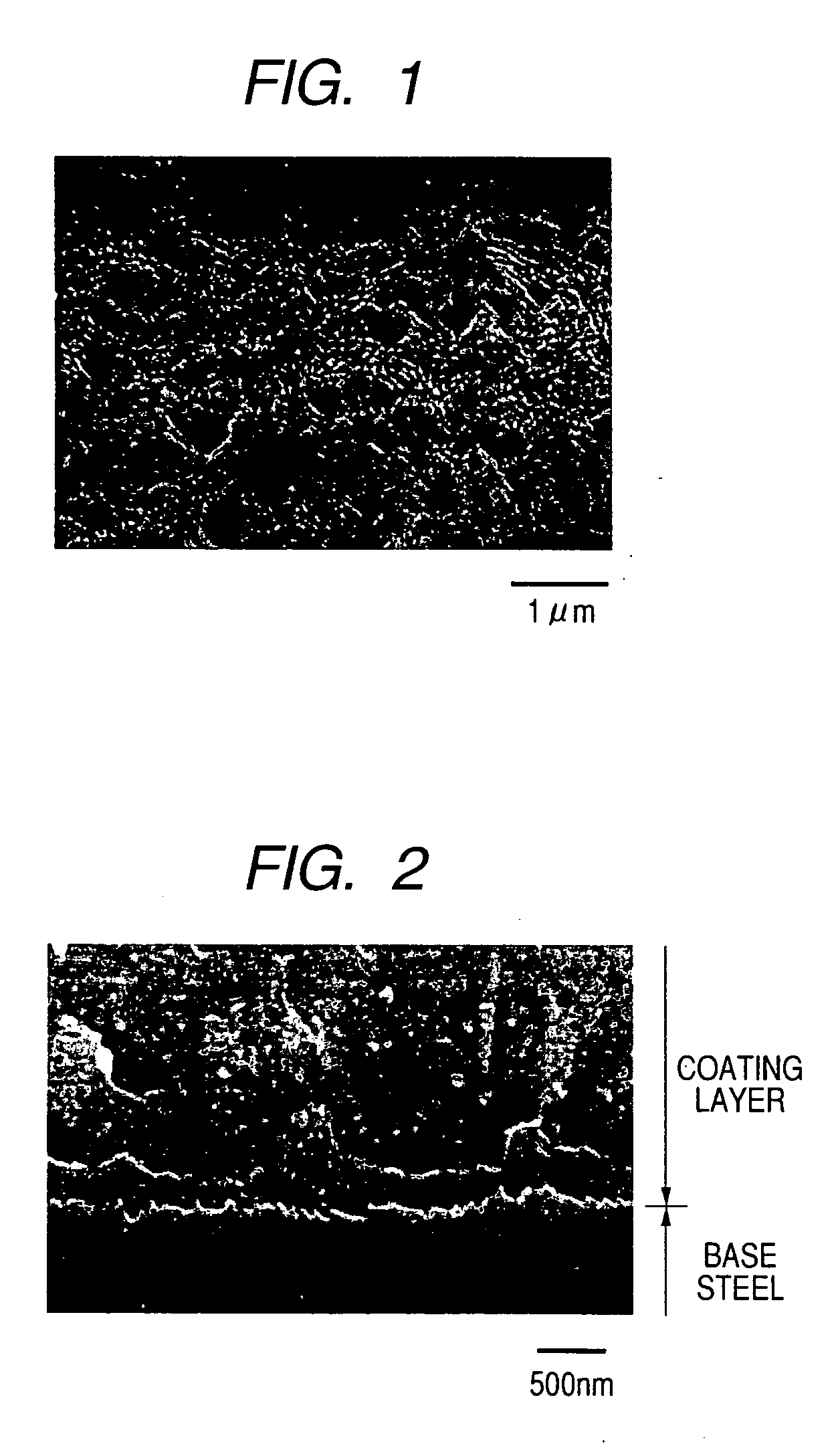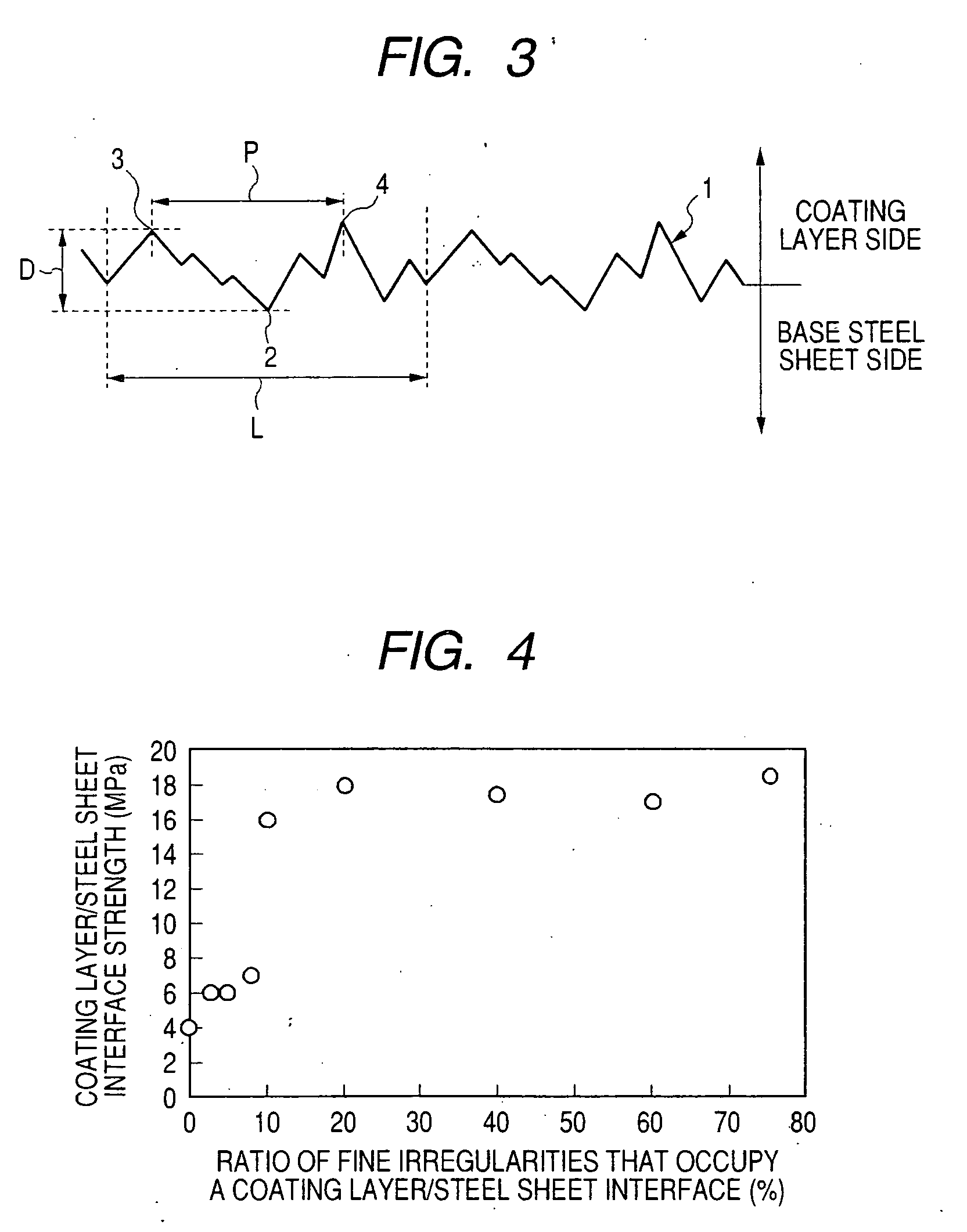Steel sheet plated by hot dipping with alloyed zinc with excellent adhesion and process for producing the same
a technology of alloyed zinc and steel sheets, which is applied in the field of galvanized steel sheets, can solve the problems of deteriorating product quality, frequent cleaning of dies, and inability to obtain desired adhesive strength, and achieve the effects of improving cold work embrittlement, workability and economic efficiency damage, and improving economic efficiency
- Summary
- Abstract
- Description
- Claims
- Application Information
AI Technical Summary
Benefits of technology
Problems solved by technology
Method used
Image
Examples
example 1
[0118] Each of steel ingots having a chemical composition shown in Table 1 was heated to 1250 degree centigrade to apply hot rolling followed by removing a scale on a surface, and thereby a hot rolled steel sheet having a thickness of 2.0 mm was prepared. Subsequently, cold rolling at the reduction rate of 50 percent was applied to form a cold rolled steel sheet having a thickness of 1.0 mm, followed by cutting out into a width of 70 mm and a length of 180 mm. This was subjected to primary heating at 830 degree centigrade in a heating furnace in a nitrogen atmosphere that contains 3 volume percent of hydrogen and has a dew point of −30 degree centigrade to cleanse a surface thereof, and thereby a base steel sheet was prepared. After the base steel sheet was dipped in 5 percent hydrochloric acid at 60 degree centigrade for 10 sec to apply pickling, recrystallization annealing and hot-dip galvanizing (hereinafter, simply referred to as “galvanizing”) were applied by use of a laborator...
example 2
[0143] Each of steel ingots having a chemical composition shown in Table 3 was heated at 1250 degree centigrade to apply the hot rolling followed by removing a scale on a surface, and thereby a hot rolled steel sheet having a thickness of 2.0 mm was prepared. Subsequently, the cold rolling at the reduction rate of 50 percent was applied to form a cold rolled steel sheet having a thickness of 1.0 mm, followed by cutting out into a width of 70 mm and a length of 180 mm, further followed by surface cleaning, and thereby a base steel sheet was obtained. The base steel sheet was dipped in 5 percent hydrochloric acid at 60 degree centigrade for 10 sec to apply pickling, thereafter, subjected to primary heating by holding at 400 degree centigrade for 1 sec in a nitrogen atmosphere (dew point: +20 degree centigrade) containing 0.1 volume percent of oxygen, and thereafter subjected to a secondary heating by holding at 750 degree centigrade for 1 sec in a nitrogen atmosphere (dew point: +20 d...
example 3
[0160] Each of steel ingots having a chemical composition shown in Table 5 was heated at 1250 degree centigrade to apply hot rolling followed by removing a black skin on a surface, and thereby a hot rolled steel sheet having a thickness of 2.0 mm was prepared. Subsequently, cold rolling at the reduction rate of 65 percent was applied to form a cold rolled steel sheet having a thickness of 0.7 mm, followed by cutting out into a width of 70 mm and a length of 180 mm, further followed by applying a primary heating at 830 degree centigrade in a heating furnace in a nitrogen atmosphere that has a dew point of −30 degree centigrade and contains 3 volume percent of hydrogen to apply surface cleaning, and thereby a base steel sheet was obtained. The base steel sheet was dipped in 5 percent hydrochloric acid at 60 degree centigrade for 10 sec to apply pickling. Thereafter, recrystallization annealing and coating were applied by use of a laboratory galvanizing simulator. Conditions for the re...
PUM
| Property | Measurement | Unit |
|---|---|---|
| length | aaaaa | aaaaa |
| length | aaaaa | aaaaa |
| length | aaaaa | aaaaa |
Abstract
Description
Claims
Application Information
 Login to View More
Login to View More - R&D
- Intellectual Property
- Life Sciences
- Materials
- Tech Scout
- Unparalleled Data Quality
- Higher Quality Content
- 60% Fewer Hallucinations
Browse by: Latest US Patents, China's latest patents, Technical Efficacy Thesaurus, Application Domain, Technology Topic, Popular Technical Reports.
© 2025 PatSnap. All rights reserved.Legal|Privacy policy|Modern Slavery Act Transparency Statement|Sitemap|About US| Contact US: help@patsnap.com



